
EU-Backed Project to Unlock Tidal and River Energy Potential
the test period.In addition, Inyanga will install and maintain SeaQurrent’s TidalKite device at Paimpol-Bréhat, managing all offshore operations.The project is aligned with Europe’s Net-Zero Strategy and the Critical Raw Materials Act, contributing to the goals of 1 GW of ocean energy capacity by 2030 and 40GW by 2050. Ocean energy holds the promise of creating 400,000 high-value jobs by 2050, revitalizing coastal communities with histories rooted in shipbuilding, fishing, and oil and gas industries.Project partners include, ORPC Ireland with RivGen technology, SeaQurrent, É
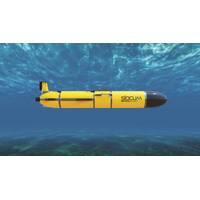
Teledyne Webb Research Unveils Slocum Sentinel Glider
– 13 inches in diameter and over 8 feet long. This expanded size allows the Sentinel to hold over 3.5 times as many lithium primary batteries as the standard Slocum Glider and to accommodate up to eight different sensor or hardware integrations."The size of the Sentinel gives it the energy capacity to increase mission length to over two years, or users can fit more high-energy sensors like active or passive acoustics, sensors with on-board processing, and imaging, without seeing a significant decrease in their overall mission length," said Shea Quinn, Slocum Glider Product Line Manager
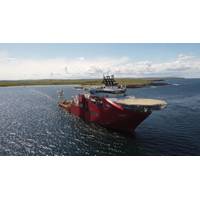
Jan De Nul Reels In Ørsted’s Hornsea 3 Export Cable Job
world’s largest.The offshore wind farm is expected to generate enough renewable electricity to power the homes of 3.3 million British households.“We are proud to support Ørsted in building the world’s largest individual offshore wind farm by connecting 2.9 GW of renewable energy capacity to the UK’s national grid. Thanks to our collaboration with Ørsted, which includes recent projects such as the monopile installations for Gode Wind 3 and Borkum Riffgrund 3 in Germany, we keep on constructing the energy transition together,” said Wouter Vermeersch, manager
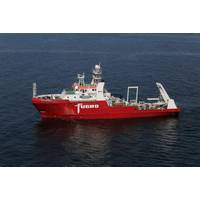
Fugro to Map Seabed Off Curaçao for Future Offshore Wind Farms
The Government of Curaçao has commissioned the Dutch offshore survey company Fugro to map the seabed of the island’s surrounding waters for the future development of floating offshore wind farms. The Curaçao Government’s target is to realize 6GW in renewable energy capacity by 2035, which is more than the domestic need for energy, ultimately enabling the production and export of green hydrogen. The survey work by Fugro follows a feasibility assessment by research organization TNO, which concluded that Curaçao’s territorial waters are some of the
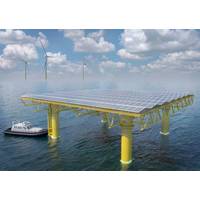
Belgian Firms Unveil Harsh-environment Offshore Floating Solar Tech
allows for easy adaptation to different sites and demands. Benefits include local renewable energy production and the possibility to install the panels in offshore wind farms (where local authorities permit multi-use concessions). Another advantage is the addition of large volumes of renewable energy capacity in a relatively short time," the partners said.The partners are currently developing an offshore test installation which will be launched off the Belgian coast in summer 2023. "The interest from the PV sector in offshore locations stems from land scarcity, combined with the need
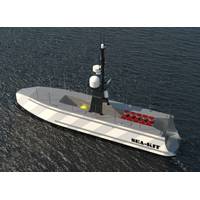
MTR100: For USVs and AUVs, is it a Hydrogen Future?
Supercharger, based on PEM fuel cell technology. It’s set to test this system with an AUV later this year.The Subsea Supercharger system comprises of a fuel cell stack, product water management and the reactant (hydrogen and oxygen) supply. The system is configurable for more than 3 MWh of energy capacity, says Teledyne, and is designed to be deployed down to 1,000m water depth and provide up to 8 kW of steady state power.Earlier this year, it worked with Innova to put its Subsea Supercharger through validation testing at the Norwegian Center for Offshore Education, Tau Autonomy Center a subsea
![[L to R]: Chris Green, Washington State Department of Commerce Assistant Director for the Office of Economic Development and Competitiveness; Elliot Smith, Director of real estate and properties, Port of Bellingham; and Geir Bjørkeli, CEO of Corvus Energy. Photo courtesy Corvus Energy](https://images.marinetechnologynews.com/images/maritime/w200h200padcanvas/chris-green-washington-132295.jpg)
Corvus Energy to open new Battery Factory in the U.S.
, including Norway’s Corvus Energy, which announced that the company is expanding its US operations by opening a new factory in the Port of Bellingham, Washington.The U.S.-based manufacturing facility, starting with Corvus’ Orca battery, will have an annual capacity of 200 MWh of stored energy capacity, with the ability to double that capacity as demand grows, said Geir Bjørkeli, CEO of Corvus Energy. It will support demand for marine BESS in the Americas as the marine industry accelerates its adoption of decarbonization technology to meet global GHG emissions reduction targets. &ldquo
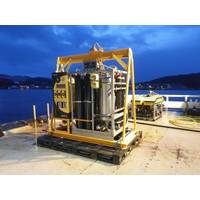
Putting Power on the Seafloor is a Fuel Cell Future
its SuperchargerOver in Norway, working with Innova, Teledyne has put its Subsea Supercharger through validation testing at the Norwegian Center for Offshore Education, Tau Autonomy Centre, a subsea testing facility not far from Stavanger, Norway.The system is configurable for more than 3 MWh of energy capacity, says Teledyne, and is designed to be deployed down to 1,000 metres water depth and provide up to 8 kW of steady state power.Teledyne first unveiled the concept in 2018. It’s designed for energy storage requirements of at least 500 kWh or where cold temperatures are a possibility, says

Scottish, French Firms Partner Up to Speed Up Tidal Energy Development
French and UK sites, driving down costs, catalyzing opportunities for funding, and delivering economies of scale to tackle the climate emergency," the companies said.In November 2020, the European Commission published the European Offshore Strategy setting out the challenge of delivering marine energy capacity targets of 100MW by 2025, and 1GW by 2030. The move spurred talks between Nova Innovation and Sabella on how to combine efforts to meet the targets, resulting in the signing of this transformational MoU, Nova said Wednesday.Nova Innovation's Eunice Tidal Turbine Fanch Le Bris,


 February 2025
February 2025





